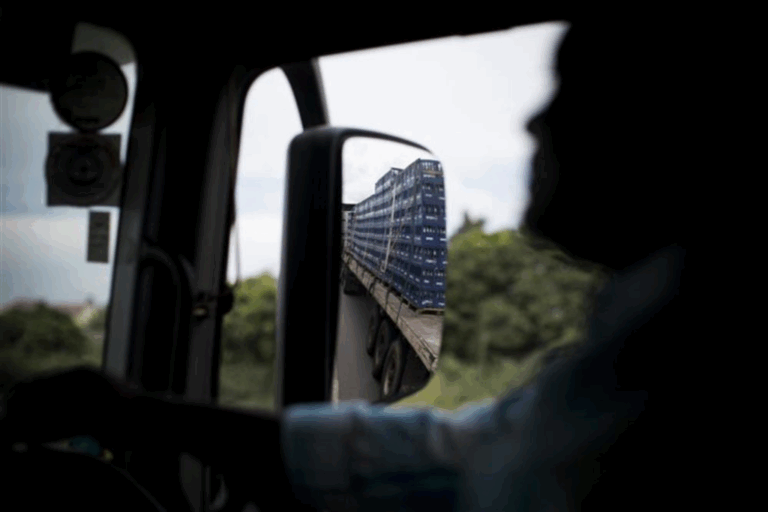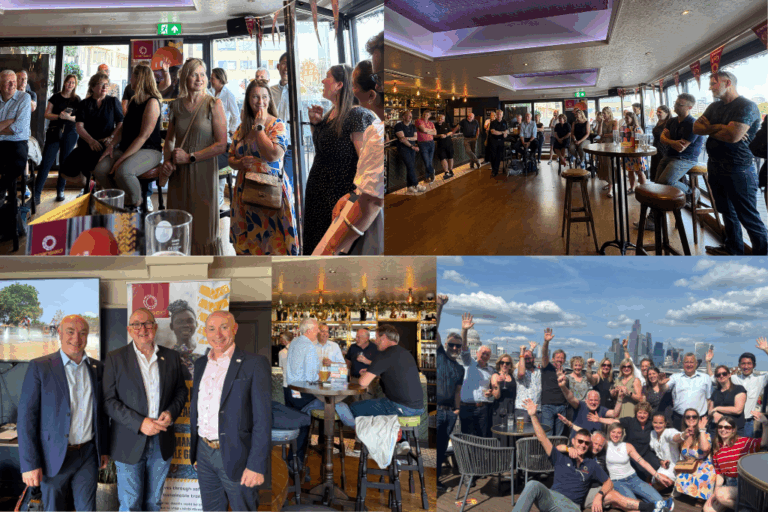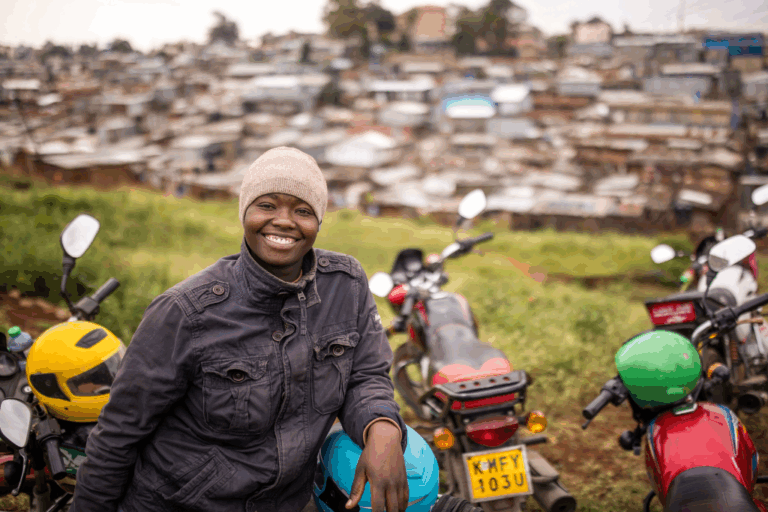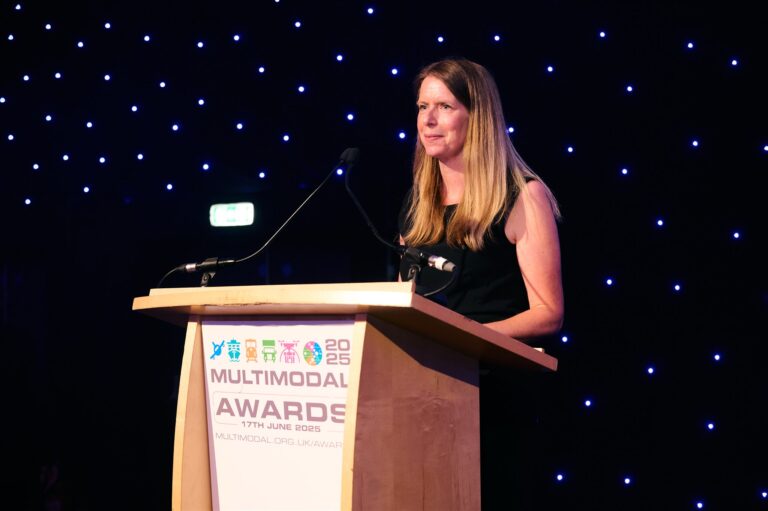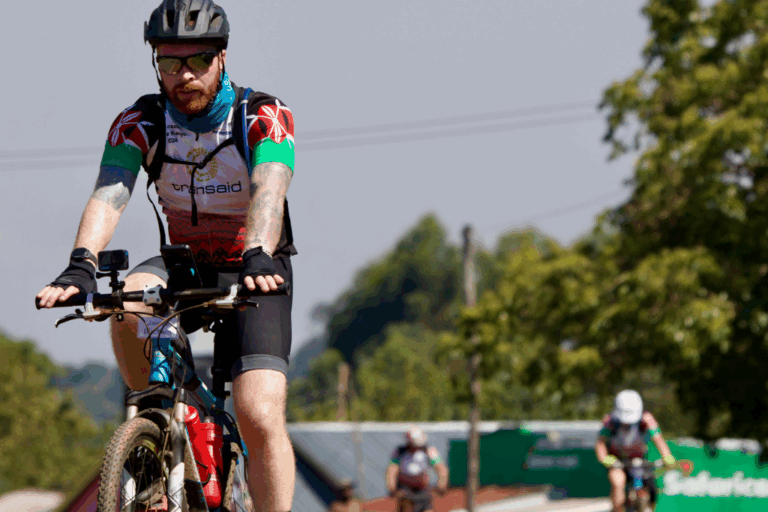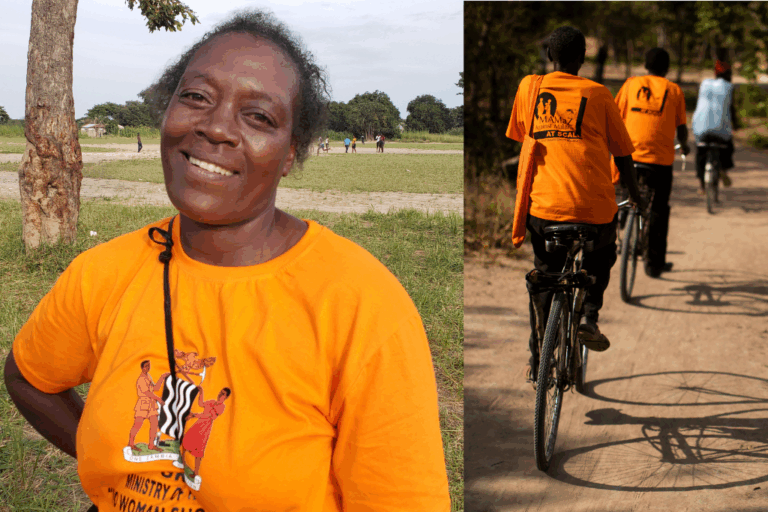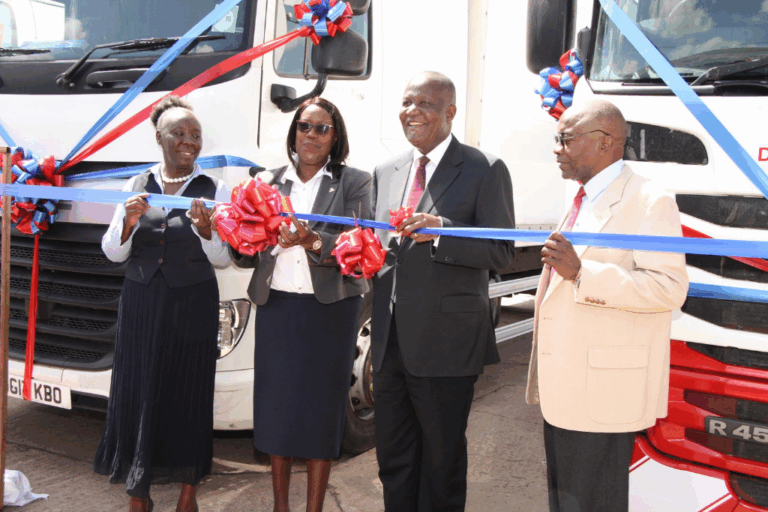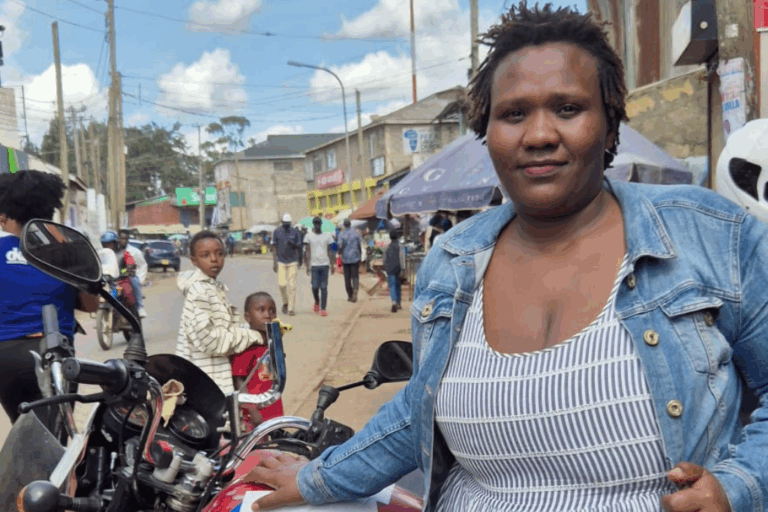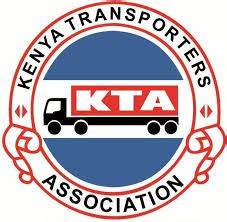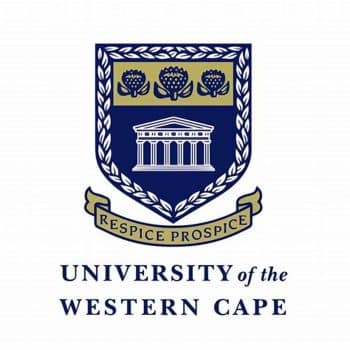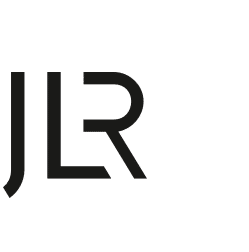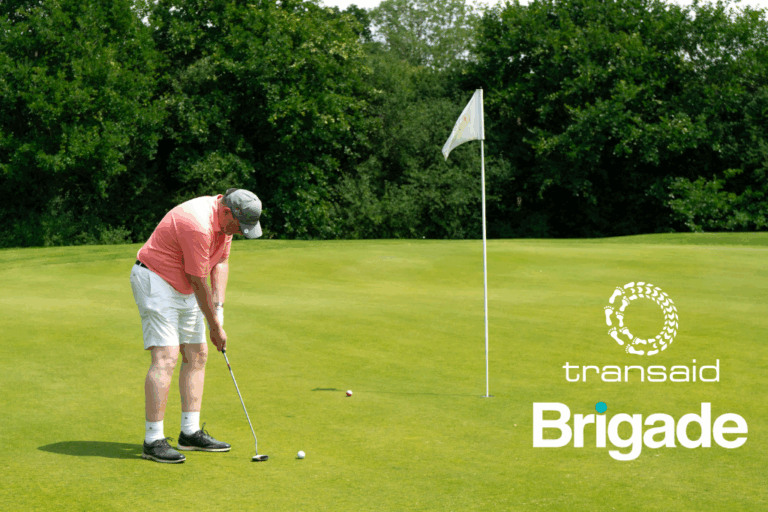
News
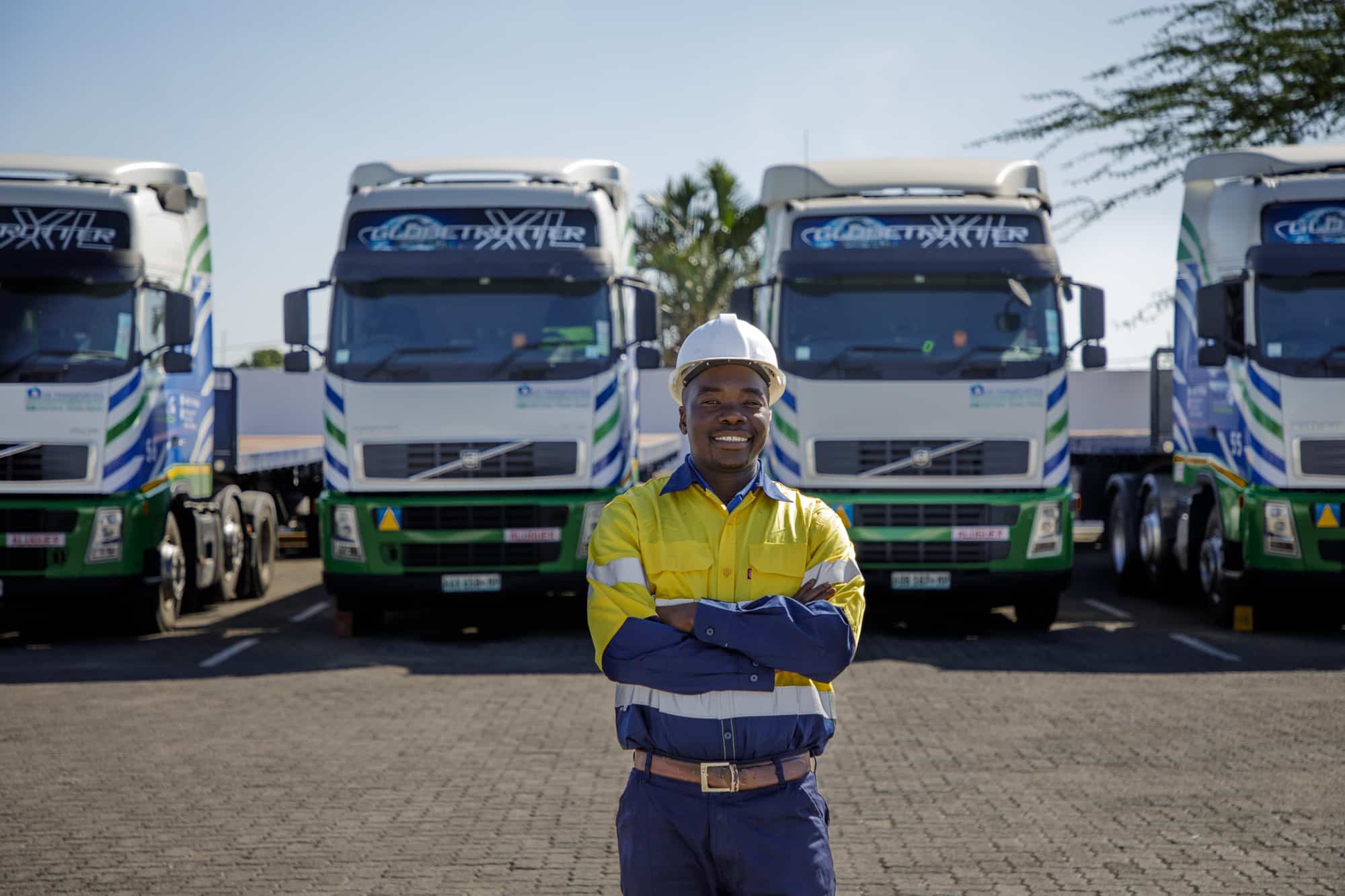
Inspirational women on International Women’s Day 2023
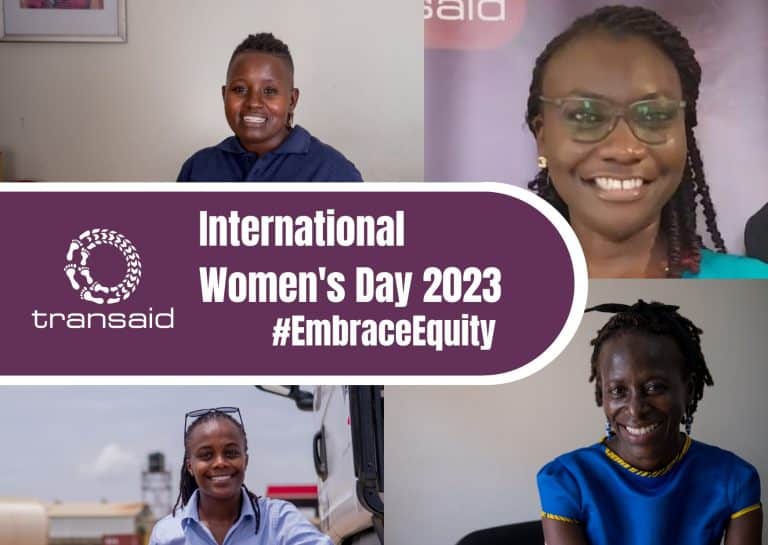
International Women’s Day is a day to reinforce the importance of a more gender-balanced world and to celebrate the achievements made by women every day and everywhere. To mark International Women’s Day, we’re profiling some of the remarkable women working for and alongside Transaid’s programmes.
This year’s theme is – #EmbraceEquity -, encouraging us all to challenge gender stereotypes, discrimination, bias, and seek out justice and inclusion. By promoting equity, we can support the drive to the creation of a level playing field, and ensure that everyone has an equal opportunity to access resources and opportunities. To truly embrace equity means to deeply believe and seek out difference as an essential and positive element of life, in turn understanding the journey required to achieve women’s equality.
This topic resonates with Transaid’s Acting Co-CEO, Florence Bearman: “In recent years the conversation surrounding equity has taken centre stage, with organisations and individuals seeking to understand, address and overcome the systemic inequalities that exist in our society, which can negatively impact communities in areas such as healthcare, employment, and education.
“On International Women’s Day, I feel privileged to be surrounded by so many incredible individuals who work tirelessly to make the world a better place by embracing equity in all areas of life.”
We spoke to a mix of females associated with Transaid – from trustees to professional drivers, to hear their stories, their thoughts on what embracing equity means to them, and how Transaid’s programmes are working to create positive change.
Thelma Ayisi – Project Manager, Transaid
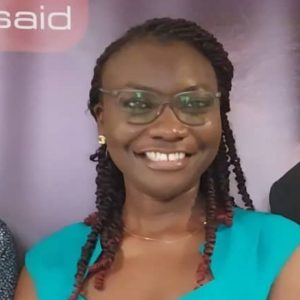 Thelma is based in Ghana, and is leading Transaid’s Professional Driver Training programme in the country. She works on several key areas, with an overarching aim to raise training standards through the development of a new HGV driver training standard and expand training capacity by training trainers in accordance to this guideline.
Thelma is based in Ghana, and is leading Transaid’s Professional Driver Training programme in the country. She works on several key areas, with an overarching aim to raise training standards through the development of a new HGV driver training standard and expand training capacity by training trainers in accordance to this guideline.
Day-to-day, Thelma’s time is spent meeting with key stakeholders, associations and project colleagues. When there is live training, Thelma’s day is often quite different as she would work from the training location. Her work on such days involves checking that the trainers and trainees are comfortable, making sure they have the required materials, and attending to any needs they might have. Outside of work, Thelma is a busy mother of two young children and a wife.
“In the workplace today, be it in formal or informal employment, we see women taking up roles previously ‘designated’ for men. Women are shattering glass ceilings in various fields but there is data to support that they are not receiving the same benefits and opportunities to grow as their male colleagues are.
“The theme this year draws attention to the need for equity and to fairly reward women and give them equal opportunities to thrive and excel. The burden on women to compete with their male colleagues for the same level of reward places an extra responsibility on women who are already juggling several responsibilities. Equity will ensure that we receive the recognition we deserve when we earn it.
“International Women’s Day is the one day when women are celebrated for first of all being women and secondly for all the great feats they make in various roles on a daily basis.
“Women do a lot without necessarily expecting any form of recognition. On International Women’s Day, several ‘sheroes’ are celebrated who hitherto were only known in their little corner, but the day provides an opportunity for them to be recognised and celebrated on a much larger scale.
“What I love most about International Women’s Day is how it changes the perspective of younger girls to enable them see the wonderful work being done by women, thus inspiring them to achieve the same greatness and even better.”
Thelma is motivated by the knowledge that the work she does can save a life either on the road or by improving and providing access to healthcare: “Seeing the number of lives that have been transformed by Transaid’s programmes and the benefit to the sub-Saharan continent, which I call home, is more than enough motivation to do what I do. What I love most about my work is the people I work with and their dedication to transforming lives through the various programmes that we run.
“One of my favourite sayings is, ‘you can have it all, just not all at once’. Having it all requires a lot of commitment, dedication and patience. If everyone would choose to embrace equity, the time it takes for us to have it all will be drastically reduced so we do not achieve it all when we are at the twilight of our lives. Let’s aim to embrace equity now so we can achieve it all while we are strong and still in the prime of our lives.”
Rachel Lwanga – Trainee, Professional Driver Training Uganda Project Phase Two
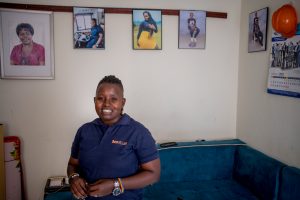
Rachel Lwanga is a female tondeka bus driver who is challenging gender stereotypes, travelling on routes in Kampala and the greater metropolitan area every day.
“What I love about my job is that I’m unique. Everywhere I go, people are shocked that it’s a lady driving the bus. They shout out my name and call me a pioneer bus driver, and treat me like a celebrity!”
From a young age, Rachel was inspired by her Aunt’s hard work transporting matoke bananas to the markets every day, and wanting to follow in her footsteps, Rachel contacted Transaid’s partner organisation, Safe Way Right Way Driver Training Centre.
The Professional Driver Training Uganda project Phase Two (PDTU-2), which is part of the GIZ E4D programme, aims to upskill drivers to take advantage of employment opportunities, while equipping them with the knowledge to be safer on Uganda’s roads.
“I did the training because I had a love of big trucks, buses and cars. I had a dream, and I had to follow that dream, so when I was offered the chance to train at Safe Way Right Way I had to take it,” Rachel told us.
Before training at Safe Way Right Way, Rachel had worked as a chauffeur for Silver Fleet and also as a bus driver for Pioneer Bus.
“I have a degree from Makere University in graphic design. This is my talent, but it is not my passion. My passion is being behind the driving wheel.
“The training at Safe Way Right Way has changed my life and my driving style. It opened my mind to the things that we do unknowingly on the road because it is a defensive driving school.
“Before, there were certain things that I thought I could do because I was driving a big car, but I have learnt to be patient. At a junction or roundabout who goes first? Even if you have a big vehicle, you must wait. Wait just a few seconds, and you will save years, and lives – and much more besides.
“A driver might think they know how to drive, but do they know how to drive safely? We get our driving permits and think we are ready to go. This is not the case, we don’t know how to drive safely. Even the smallest car on the road is a beast, and if you are not patient, you will ruin lives.
At Safe Way Right Way, we are taught to look at the road markings, sign posts and lights. The yellow light is warning you, and so many people just drive through and crash. This is why the training at Safe Way Right Way is so important.
“Everyone thinks of me as a safer driver because I am female, and this may be true, I am very safe. But it is also because I have been trained and my gender did not affect my selection for that training.
“I encourage other women to train at Safe Way Right Way because I want to spread the news and leave a legacy, but some women are concerned about the size of the trucks and how they will be perceived.”
Male colleagues were shocked when Rachel started working on tondeka buses, even passengers were surprised to see her behind the wheel.
Rachel recently received an award for Professional Driver of the Year, from the Uganda Professional Drivers Network (UPDN). She described it as the biggest day of her life.
At first, Rachel’s family where unsure of her choice of profession, but they are now so proud of her.
“My daughter is very happy. Every time I collect her from school, she calls to her friends and teachers to see me! They are interested because I have been on TV, and in the newspapers and magazines.”
Rachel aspires to become a driver trainer and plans to build a foundation for women in transport.
“I want to connect the foundation with a driving school for ladies from the age of eighteen. If they want to learn how to drive, come and we will do it together.
“For Uganda to prosper, for the roads to be safer and for the number of accidents to reduce, everyone must go through training at a driving school – whether it’s a boda boda [motorcycle], a small car, a bus, or a truck. Things are changing every day, and similarly we must keep training and advancing our knowledge.
“I think maybe thirty percent of people know the roads well in terms of the signs, the markings and the rules. Attitudes and mindsets need to change, everyone must drive defensively.”
Sharon Kinyatta – Trainee, Professional Driver Training Uganda Project Phase Two
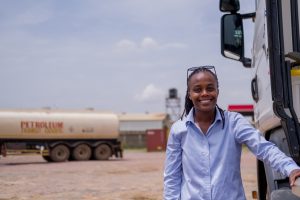 “I intend to become one of the most competent drivers in Uganda, and to prove that driving HGVs is possible for everyone as long as you have passion and drive.”
“I intend to become one of the most competent drivers in Uganda, and to prove that driving HGVs is possible for everyone as long as you have passion and drive.”
Growing up with just her father, Sharon watched him do a lot of things that were considered to be for men only, particularly when it came to driving.
“When he drove me to school, I would sit in the front and enjoy watching him handle the vehicle controls.”
Sharon’s first job was in marketing. Using her initial salary, she went to a driving school to get her first permit.
“I wanted to be a professional driver to make my father proud, to be more like him, to become a more competent driver, and to learn more. I thought I will save up and go to a driving school to become a safer driver.”
When Sharon started training at Safe Way Right Way Driver Training Centre, she learnt to be patient and use the road with other people.
“At first, driving a truck in Uganda can be scary as you have boda bodas [motorcycles] coming out from every corner, and there are often pedestrians on the road.
“However, at Safe Way Right Way the first thing you are taught is that safety begins with us, so we learn how to be careful, consistent with speed, and when to slow down. I must be the good driver. If someone wants to rush, let them rush, but I will not cause any hazards or crashes, and I will use my mirrors.
“The training at Safe Way Right Way was the best experience I have ever had in my life. At my first driving school the training was very basic, but the trainers at Safe Way Right Way will sit down with you right from the start. They will teach you the theory, everything about the vehicle, and what to expect on the road.
“Later, you will have the practical training where they will be by your side, and teach you the mechanics and how the vehicle operates.
“It is a steady process, and soon you will find yourself independently driving with them watching you. They will make you sure you are using your mirrors, driving at a good speed, and doing what you have been taught.
“When I drive people they thank me, praising me for driving so well – it is a good feeling.
“When I was first called to do the Class C training, and then later called to progress, I was so grateful.
“I am now driving the biggest vehicles – the trucks, and it is such a blessing.”
As part of the PDTU-2’s commitment to finding employment opportunities for the trainees, Sharon was sent for an assessment at Hima Cement which she passed.
“At Hima I will be on the road with people who are more advanced than me, and with vehicles I haven’t driven before. The Renault vehicle is new technology, so we must go for training and learn how to use it.
“I will be transporting goods for Hima Cement to different areas around Uganda.
“I am looking forward to driving my truck safely, getting the goods to my consignor, and then returning to my boss and handing back the keys, with the vehicle in good condition, and the job done.
“In the future, I would like to travel to Canada or the UK, and drive more advanced trucks.”
Sharon’s father is proud of her, but can’t believe that she is a professional driver.
“He is an old man, so he still sees it as a man’s job.”
People often say to Sharon, “you’re small, can your feet touch those pedals? Isn’t the steering wheel too big for you?”
Sharon made it clear that such comments will not stop her determination to prove that driving Heavy Goods Vehicles is possible for everyone if you have the passion and the commitment.
“It is challenging to work in such a male dominated industry. A lot of men feel that we are taking their jobs, but I have had a passion for driving and vehicles since early childhood, so I am not scared. We can share the road, and the work, together.
“To another woman considering whether to undertake the training, I would say that it might look challenging but it is not. It is about your mindset, and having a passion for vehicles. If you listen to the instructor, you practice, and ask questions, it will turn out to be something very enjoyable.
“We should not take this training for granted. We need to go out there and make our instructors proud, we have been given the chance, so we must do the best we can.”
Dr. Olive Kobusingye – Transaid Trustee
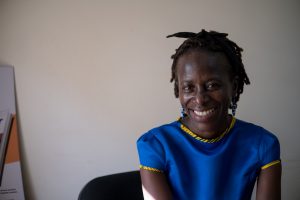 “Transaid’s work in sub-Saharan Africa, such as with motorcycle safety in Kenya, and the access to health services in Zambia is about development and helping people who need it most. Equity creates better livelihoods, and if people have better livelihoods, they will do more thinking and preparing, rather than waiting for a crisis.”
“Transaid’s work in sub-Saharan Africa, such as with motorcycle safety in Kenya, and the access to health services in Zambia is about development and helping people who need it most. Equity creates better livelihoods, and if people have better livelihoods, they will do more thinking and preparing, rather than waiting for a crisis.”
Olive is a specialist in trauma and accident prevention and lives in Uganda. Whilst training as a doctor, and when specialising as a surgeon, she encountered many injuries from road crashes.
“I was coming to work to treat people that left their homes in perfect health, and some never made in back. I started to think that there needs to be something different, something focused on prevention. This is what set me onto the path to thinking about injury prevention and road safety.”
After completing a masters in public health, where she focused on epidemiology and injury prevention, Olive was interested in improving the quality of data for injuries in Uganda.
“I returned to the same hospital where I had been working and set up a trauma registry – these systems are used to track the type of injury, the causes, how to treat them and how to improve patient outcomes. I was looking at how these systems can be set up to work even in low income countries, and I also set up an organisation called the Injury Control Centre Uganda.
“Road traffic was the biggest problem, around fifty percent of all injuries, deaths and admissions were from the road. These were big numbers for a country that is not very highly motorised.
“We were trying to advocate for improved care through data systems. I realised that this is a multisectoral problem, and not just in the health sector.”
After working as a clinician, then in research, and then in community service and advocacy, Olive took a job with the World Health Organisation’s (WHO) regional office for Africa.
“The WHO African region has forty-six countries, and my mandate was to help countries improve their data systems with regards to injuries. I also worked on the global status reports for road safety.”
When Olive returned to the school of public health, they did not teach injury related conditions and were very focused on communicable and non-communicable diseases.
“I introduced the teaching of injury epidemiology, which I feel has been my biggest contribution to the school of public health, as students will be able to study injury and its prevention.”
In the last decade across sub-Saharan Africa, the use of boda bodas has increased rapidly and with this, there has also been a growing number of head injuries.
“One of my projects was around trying to increase helmet use. Although it has taken some time, we have seen a reasonable rise in helmet use. It is about increasing awareness that helmets can make a difference and people should be investing in them.
“We have a huge problem with boda bodas and head injuries. Riders do not choose to crash outside of Mulago hospital, they are crashing everywhere. Uganda does not have a mass transit system, and there is a staggering number of people coming from Mukono into the central district every day.
“This means that we have set ourselves up for a lot of road crashes that could have been prevented if we had introduced systems to move mass amounts of people. Whilst we think about increasing helmet use, improving emergency trauma care and planning how to move large numbers of people is essential.
“Even if every boda boda rider wears a helmet, there’s still going to be significant injury and death that could have been prevented if we had better transportation. However, it is not just about transportation, but also a development problem. There are many facets that must be considered, and a more concerted debate is required around how improving people’s livelihoods will do many other positive things. Mobility is central to how we live, and we must think strategically about how to make mobility safer, so that we can improve livelihoods.
“Right now, there is much emphasis on making boda bodas safer, rather than providing the transportation system that would deem them unnecessary. We must protect those that use boda bodas as they will not disappear tomorrow, but at the same time we should build a system that can transport more people safely.
Olive recognises that in places where mass transit systems have been introduced, there is more efficiency – more people moving faster and more safely.
“In Uganda we are still stuck using two wheels, or fourteen seaters – which are polluting the environment and are not cheap.”
When Uganda first opened up for oil, roads were being improved or built from scratch to facilitate the movement of oil, resulting in concerns around the possibility of increased numbers of crashes and deaths. Olive was part of a project, in collaboration with Transaid, looking to anticipate and reduce crashes before they occurred.
“We looked at emergency trauma care, and how we could be prepared for the best possible outcomes. We looked at the traffic corridors, the police stations and the health facilities.
“Often in Uganda the first people on the scene of a crash are the police, but often they do not have the equipment or skills to deal with the injured. We worked with the police to improve their capacity and skill, and we trained people in the police and hospitals together to work as a team.
“We developed an emergency medical services standard which was approved and passed.”
In the past Olive was often asked why as a doctor, she spent time with the police and the Ministry of Works and Transport.
“But there is now awareness that we cannot fix these issues alone, we need to involve all facets of society to design better roads, better enforcement, better policing, so that fewer patients are coming into the hospital – and when they do they have been stabilised and moved appropriately.”
Olive believes that the game changer for Uganda will be infrastructure.
“Infrastructure can quickly make systems safer, but it is a huge investment upfront.
“I walk a lot and am constantly aware of the risks. When we build roads, we must have the mindset that they are not just for people in cars, but also for those walking. If you make provisions for the walking, then you will spend less on emergency trauma care.
“A lot of civil engineers in Uganda were trained in the UK where the largest proportion of road users are in cars. In Uganda, priority should be given to those walking because they are the majority and the most vulnerable – we can’t use the same manuals and standards.
“If there was a train or mass transit system where I lived, I would happily use it rather than drive, and similarly I think the people using boda bodas would too.
“We have seen progress in Dar Es Salaam, Lagos, Cape Town, and other African cities in terms of mass transit systems, but these are long-term projects.
“In terms of prevention, infrastructure is key. We can tinker with the edges and fix smaller things, but it is investment in infrastructure that will have the greatest effect.”
Recent Posts

